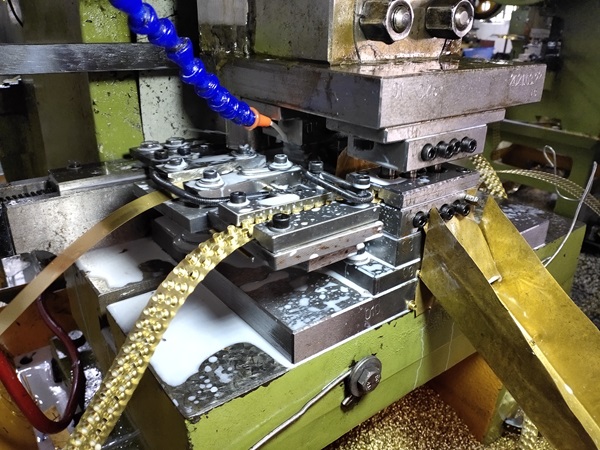As we all know, metal buttons are fasteners used in clothing or other related items to provide certain fastening or decorative functions, including rivets, jeans buttons, snap buttons, metal labels, eyelets, brooches, adjustment buttons, hooks, etc.
Although buttons are small, their manufacturing process is not simple. As far as metal buttons are concerned, their production process can be divided into stamping process, die-casting process and combined process. Generally speaking, metal buttons produced by stamping process are considered as metal products, while metal buttons produced by die-casting process are usually called alloy products.
Metal buttons: snap buttons, claw buttons, jeans buttons, rivets, eyelets, hooks, etc.
Alloy buttons: hand sewn buttons, labels, brooches, etc
Stamping process
The stamping process utilizes the plastic deformation and elasticity of some metal materials such as copper, iron and aluminum. Metal materials will be transformed into the required shape through pressing, punching and other processes, and their state will not change in the whole manufacturing process.
Production process: manufacturing molds – cutting raw materials into strips – Stamping – surface treatment – assembly – quality inspection – packaging and delivery

Die casting process
The metal solution is injected into the metal mold cavity under high pressure and cooled to form various parts. Non ferrous metals with low melting point, such as zinc alloy and lead tin alloy, are usually used in die casting process.
Production process: mold manufacturing – die casting – burr trimming – polishing – surface treatment – assembly – quality inspection – packaging and delivery
When the product contains the above two different processes or when the product is composed of metal materials and other materials, the combination process combination process.
The production cycle of metal buttons will vary greatly according to the complexity of manufacturing process and product volume.
